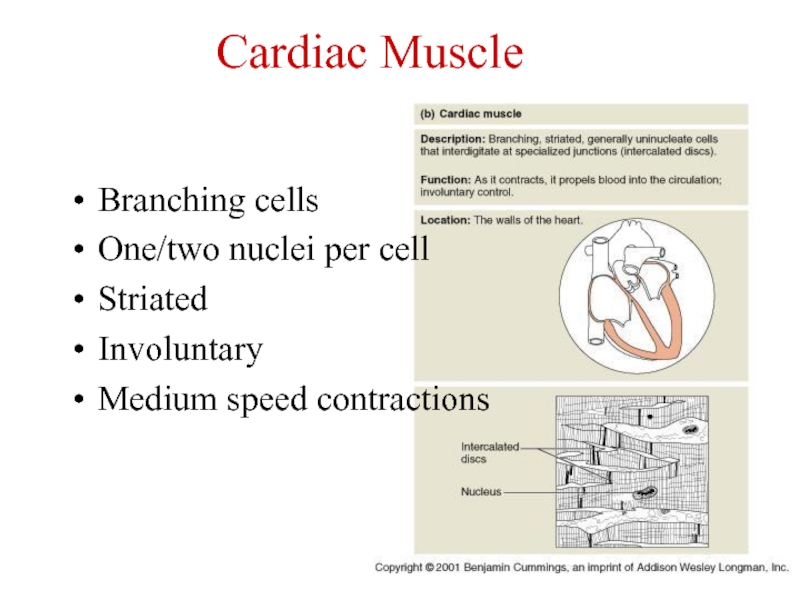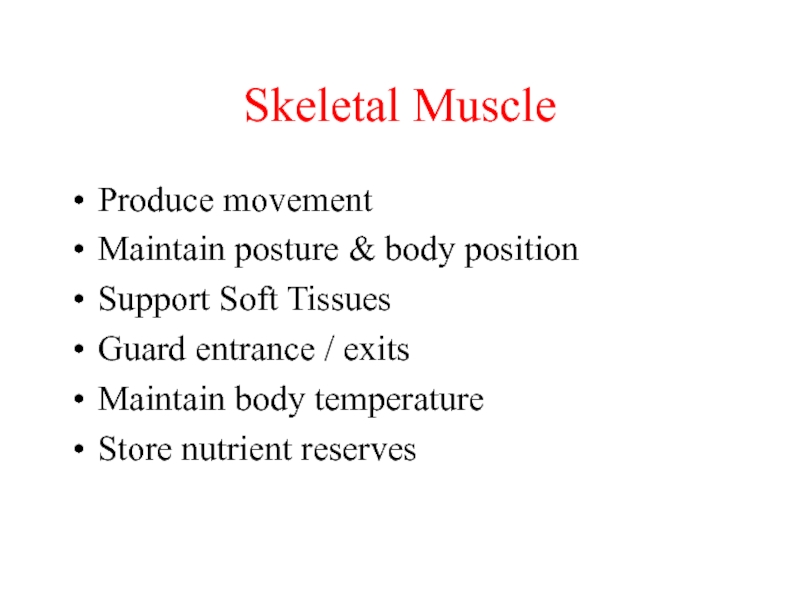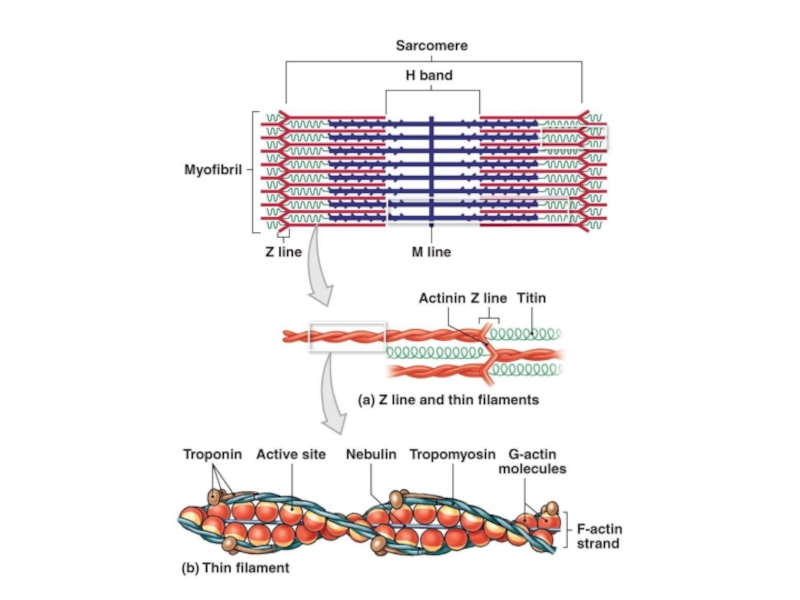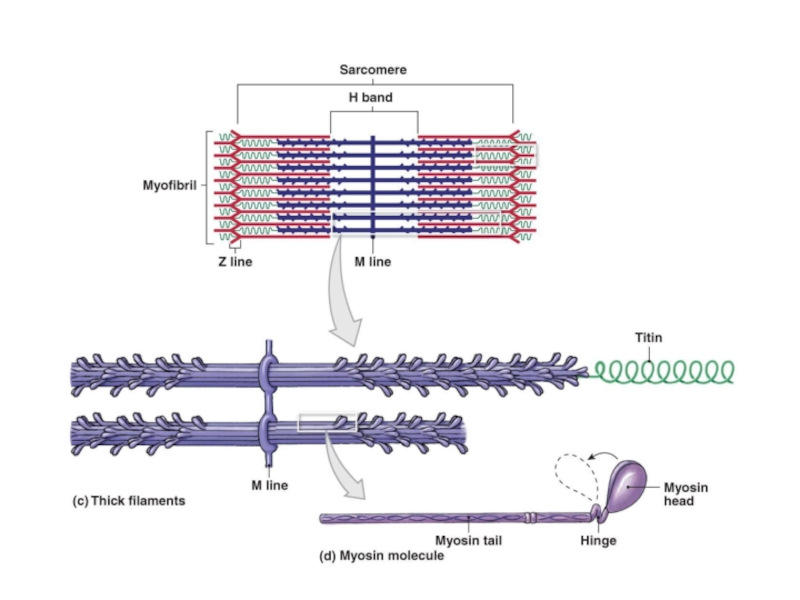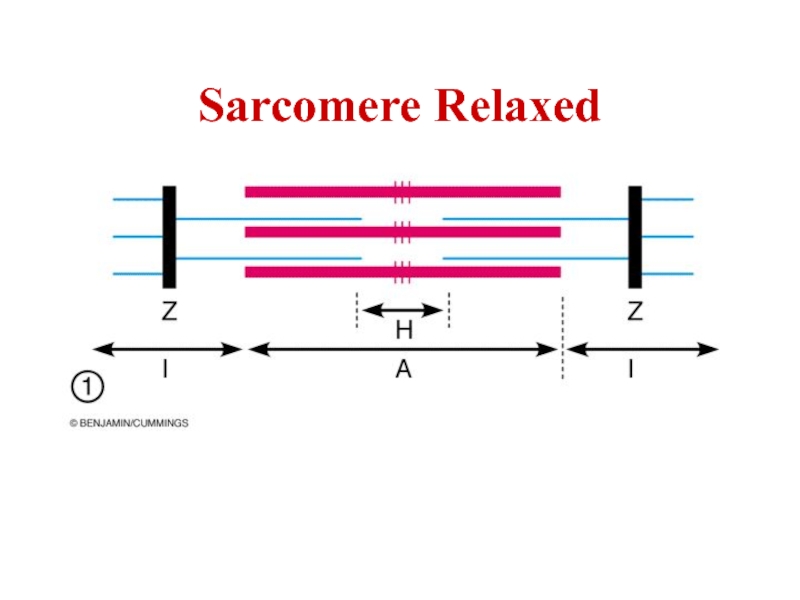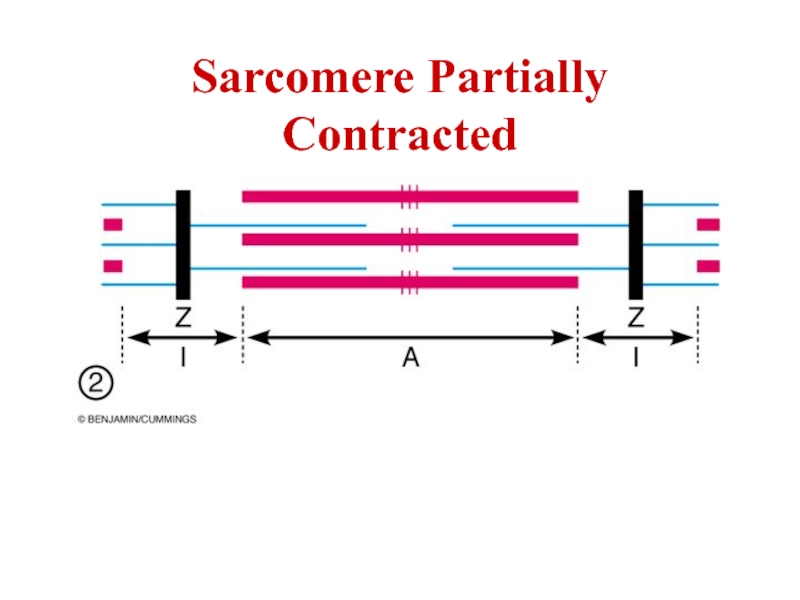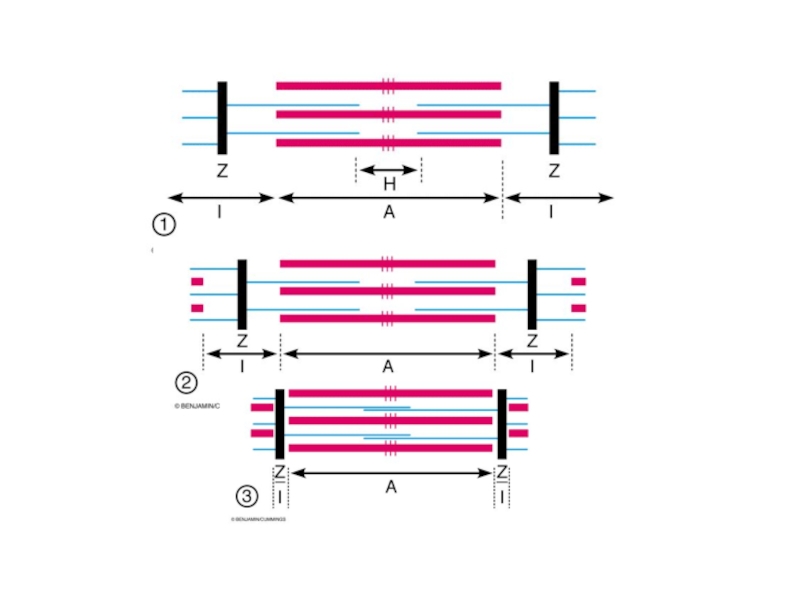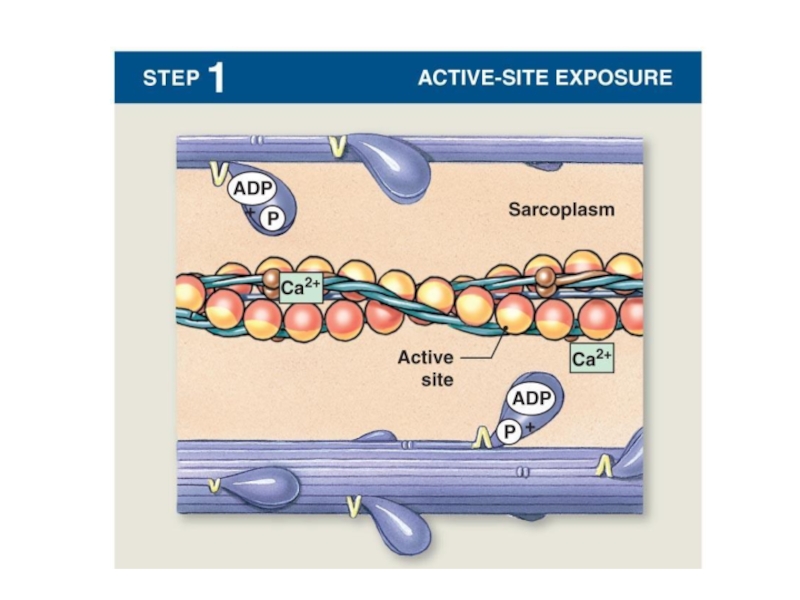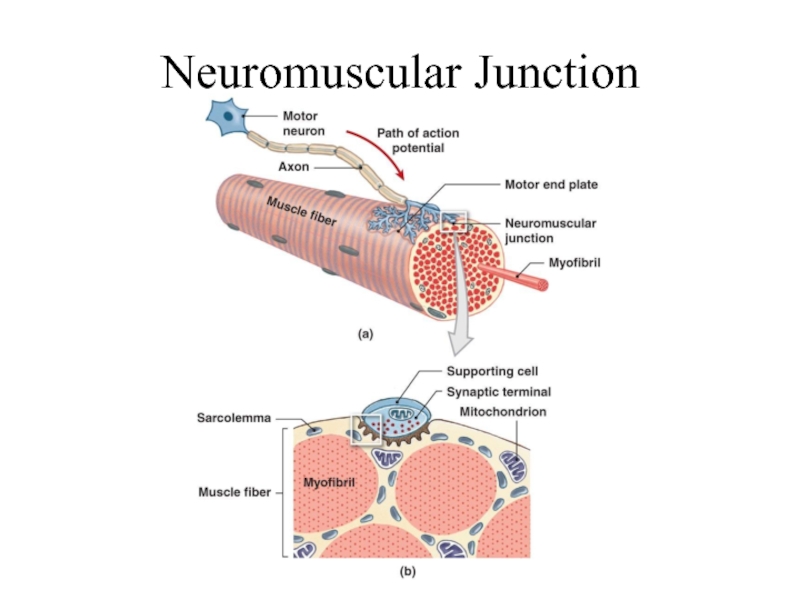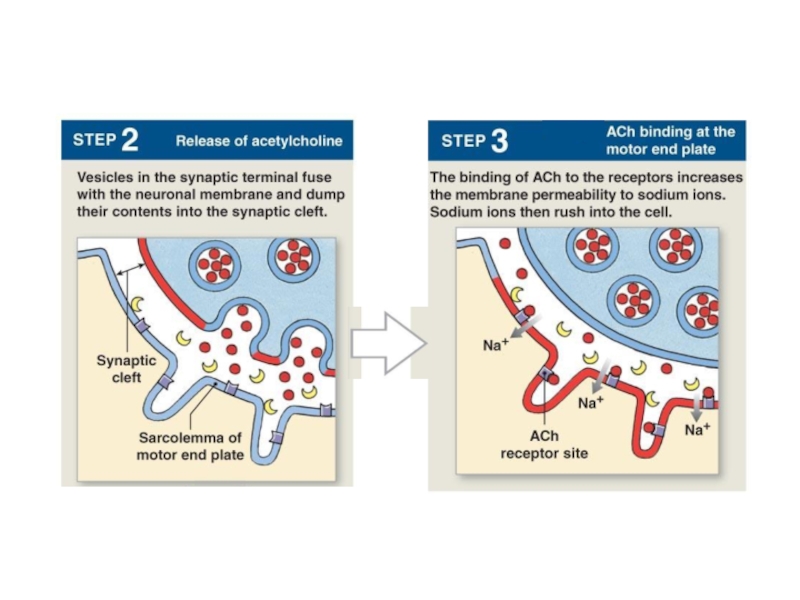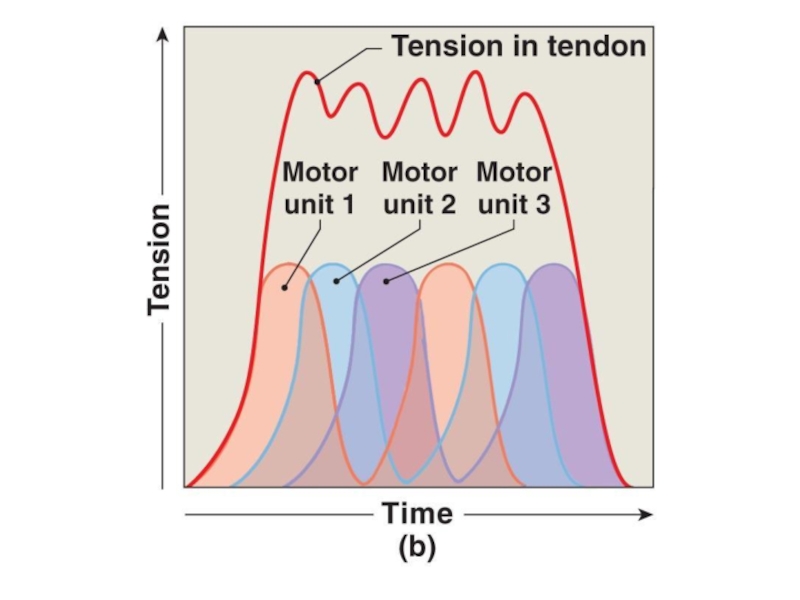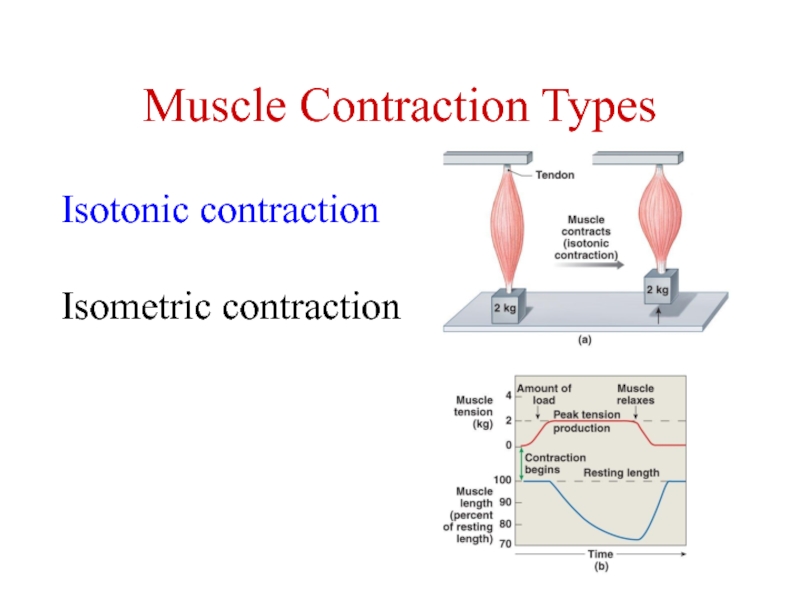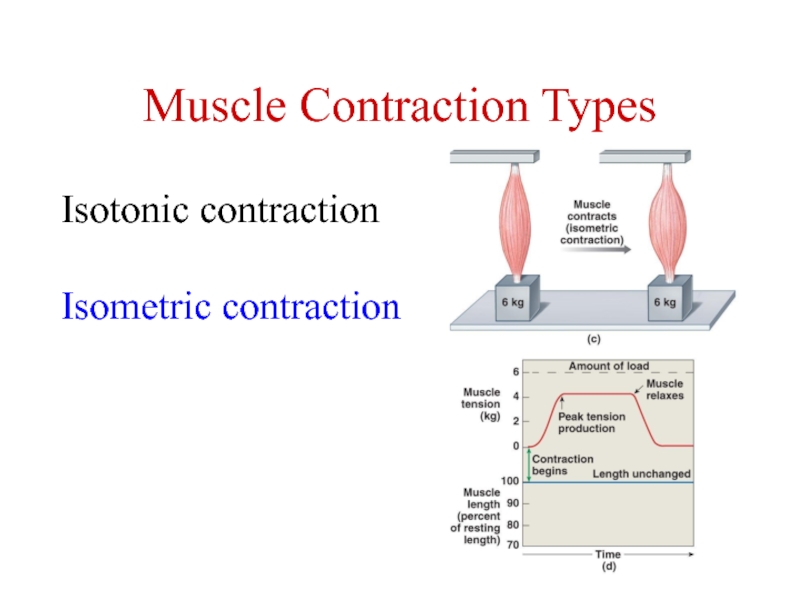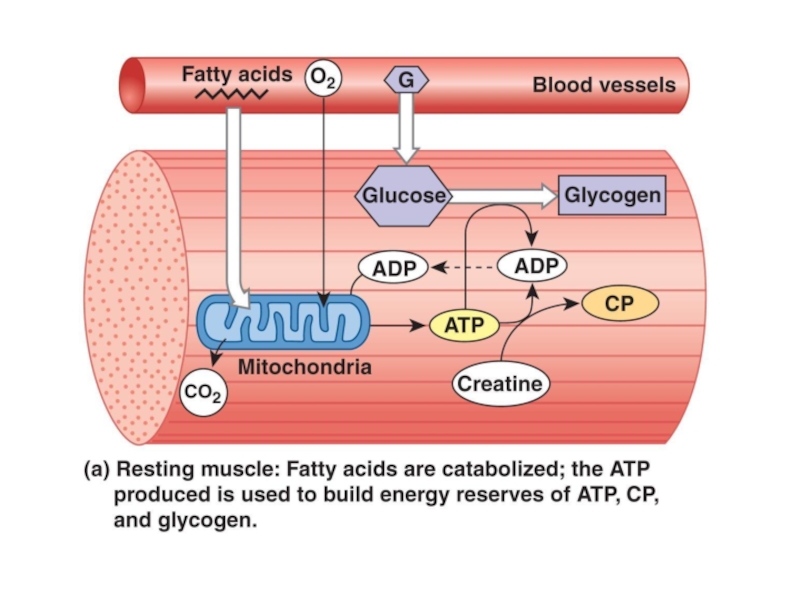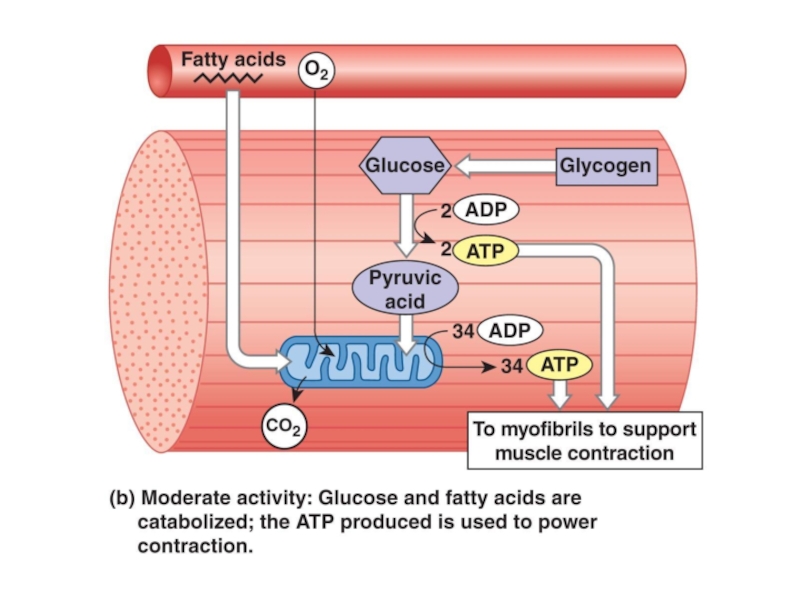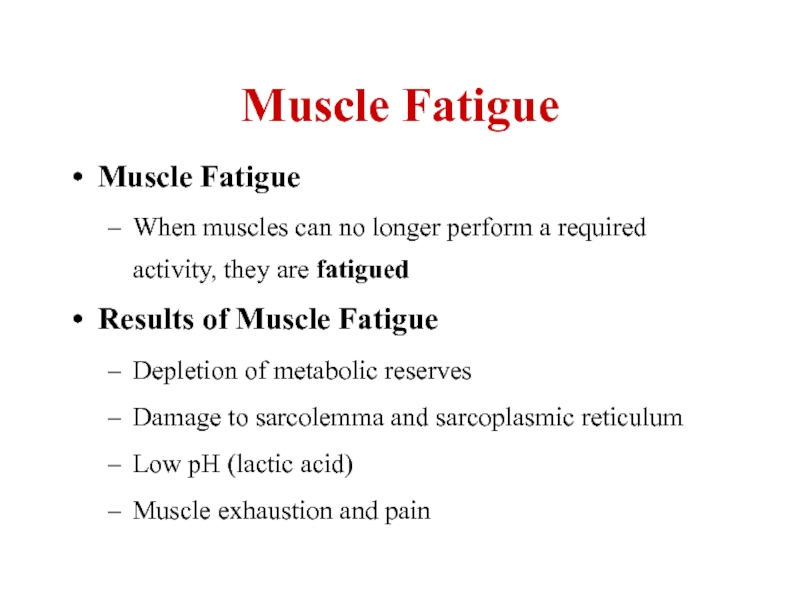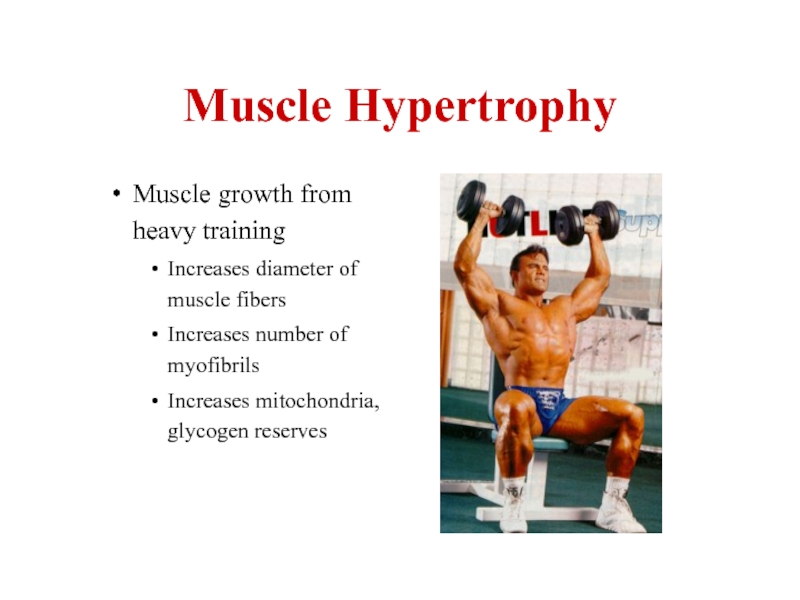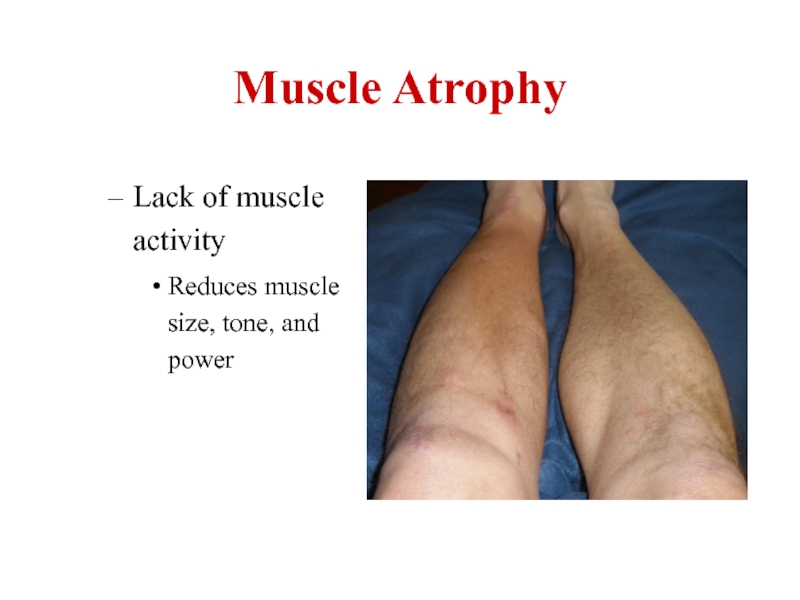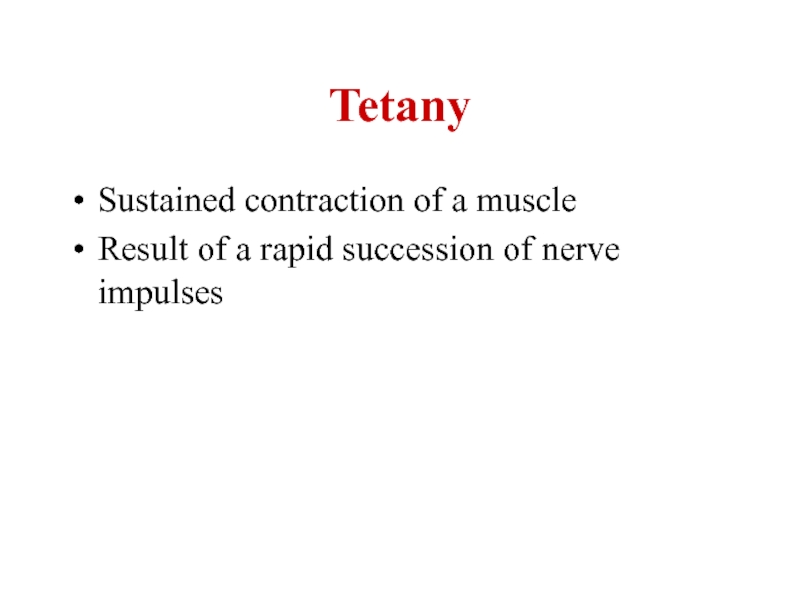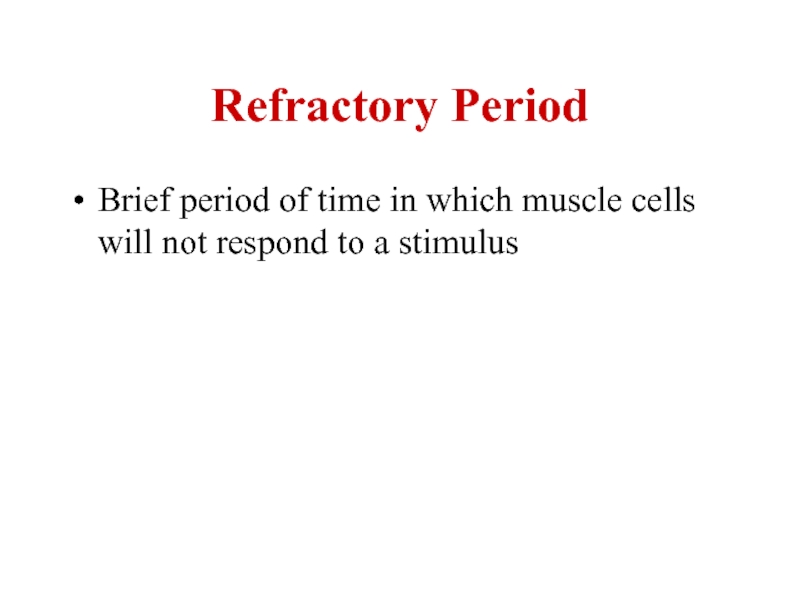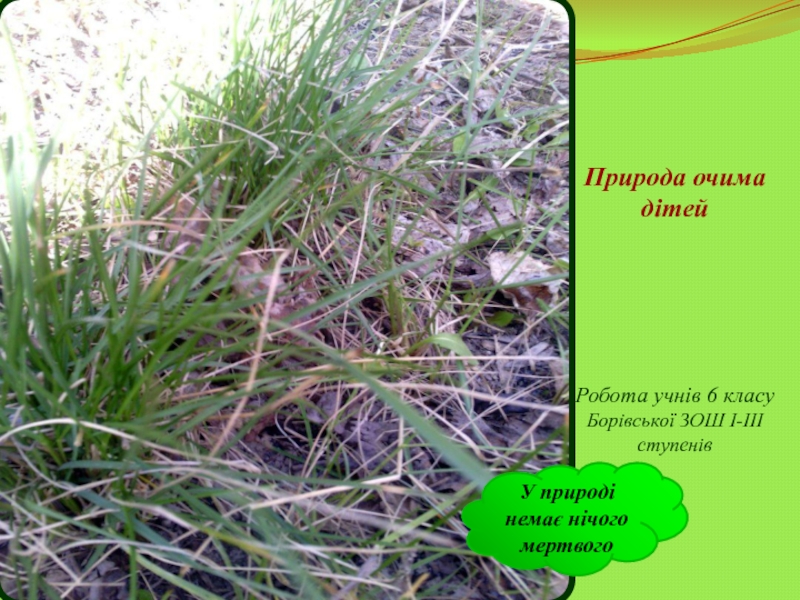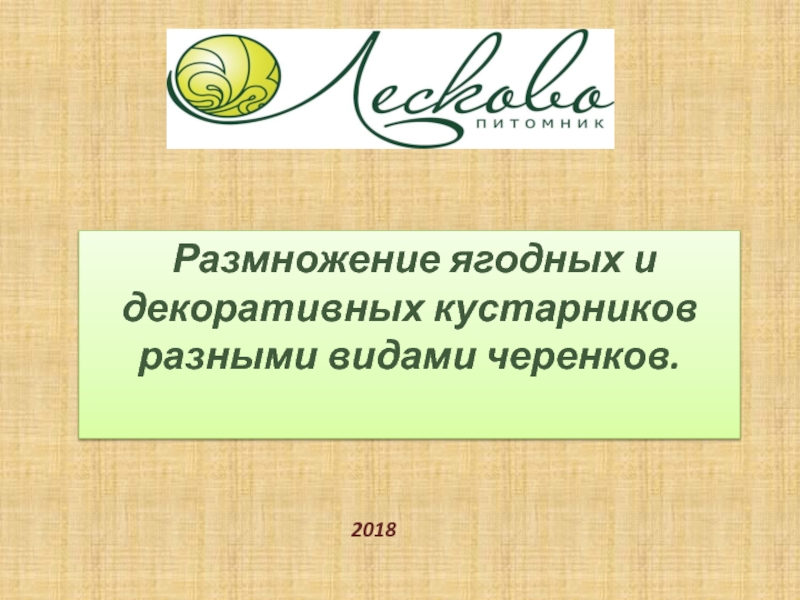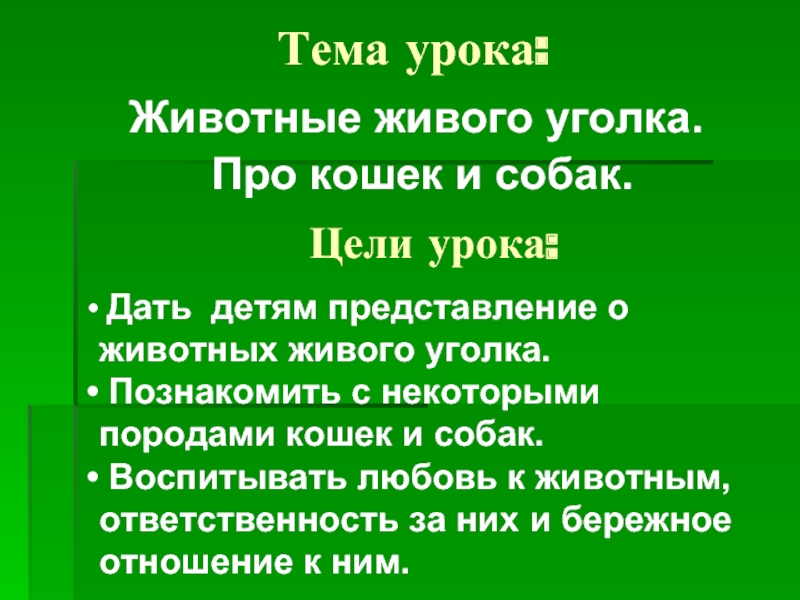- Главная
- Разное
- Дизайн
- Бизнес и предпринимательство
- Аналитика
- Образование
- Развлечения
- Красота и здоровье
- Финансы
- Государство
- Путешествия
- Спорт
- Недвижимость
- Армия
- Графика
- Культурология
- Еда и кулинария
- Лингвистика
- Английский язык
- Астрономия
- Алгебра
- Биология
- География
- Детские презентации
- Информатика
- История
- Литература
- Маркетинг
- Математика
- Медицина
- Менеджмент
- Музыка
- МХК
- Немецкий язык
- ОБЖ
- Обществознание
- Окружающий мир
- Педагогика
- Русский язык
- Технология
- Физика
- Философия
- Химия
- Шаблоны, картинки для презентаций
- Экология
- Экономика
- Юриспруденция
Muscular рhysiology презентация
Содержание
- 1. Muscular рhysiology
- 2. Muscle Tissue Skeletal Muscle Cardiac Muscle Smooth Muscle
- 3. Cardiac Muscle Branching cells One/two nuclei per cell Striated Involuntary Medium speed contractions
- 4. Smooth Muscle Fusiform cells One nucleus per cell Nonstriated Involuntary Slow, wave-like contractions
- 5. Skeletal Muscle Long cylindrical cells Many nuclei per cell Striated Voluntary Rapid contractions
- 6. Skeletal Muscle Produce movement Maintain posture &
- 7. Skeletal Muscle Structure
- 8. Skeletal Muscle Fiber
- 9. Sarcomere
- 13. Sarcomere Relaxed
- 14. Sarcomere Partially Contracted
- 15. Sarcomere Completely Contracted
- 24. Neuromuscular Junction
- 29. Single Fiber Tension The all–or–none principle As
- 32. Muscle Contraction Types Isotonic contraction Isometric contraction
- 33. Muscle Contraction Types Isotonic contraction Isometric contraction
- 34. Muscle Contraction Types Isotonic contraction Isometric contraction
- 35. ATP as Energy Source
- 36. Creatine Molecule capable of storing ATP energy
- 37. Metabolism Aerobic metabolism 95% of cell demand
- 41. Muscle Fatigue Muscle Fatigue When muscles can
- 42. Muscle Hypertrophy Muscle growth from heavy training
- 43. Muscle Atrophy Lack of muscle activity Reduces muscle size, tone, and power
- 44. Steroid Hormones Stimulate muscle growth and hypertrophy Growth hormone Testosterone Thyroid hormones Epinephrine
- 45. Muscle Tonus Tightness of a muscle Some fibers always contracted
- 46. Tetany Sustained contraction of a muscle Result of a rapid succession of nerve impulses
- 47. Tetanus
- 48. Refractory Period Brief period of time in
- 49. Refractory
- 50. Skeletal Muscle Cardiac Muscle Refractory Periods
Слайд 3Cardiac Muscle
Branching cells
One/two nuclei per cell
Striated
Involuntary
Medium speed contractions
Слайд 4Smooth Muscle
Fusiform cells
One nucleus per cell
Nonstriated
Involuntary
Slow, wave-like contractions
Слайд 6Skeletal Muscle
Produce movement
Maintain posture & body position
Support Soft Tissues
Guard entrance /
Maintain body temperature
Store nutrient reserves
Слайд 29Single Fiber Tension
The all–or–none principle
As a whole, a muscle fiber is
Tension of a Single Muscle Fiber
Depends on
The number of pivoting cross-bridges
The fiber’s resting length at the time of stimulation
The frequency of stimulation
Length–tension relationship
-Number of pivoting cross-bridges depends on:
amount of overlap between thick and thin fibers
-Optimum overlap produces greatest amount of tension:
too much or too little reduces efficiency
-Normal resting sarcomere length:
is 75% to 130% of optimal length
Слайд 37Metabolism
Aerobic metabolism
95% of cell demand
Kreb’s cycle
1 pyruvic acid molecule ? 17
Anaerobic metabolism
Glycolysis ? 2 pyruvic acids + 2 ATP
Provides substrates for aerobic metabolism
As pyruvic acid builds converted to lactic acid
Слайд 41Muscle Fatigue
Muscle Fatigue
When muscles can no longer perform a required activity,
Results of Muscle Fatigue
Depletion of metabolic reserves
Damage to sarcolemma and sarcoplasmic reticulum
Low pH (lactic acid)
Muscle exhaustion and pain
Слайд 42Muscle Hypertrophy
Muscle growth from heavy training
Increases diameter of muscle fibers
Increases number
Increases mitochondria, glycogen reserves


